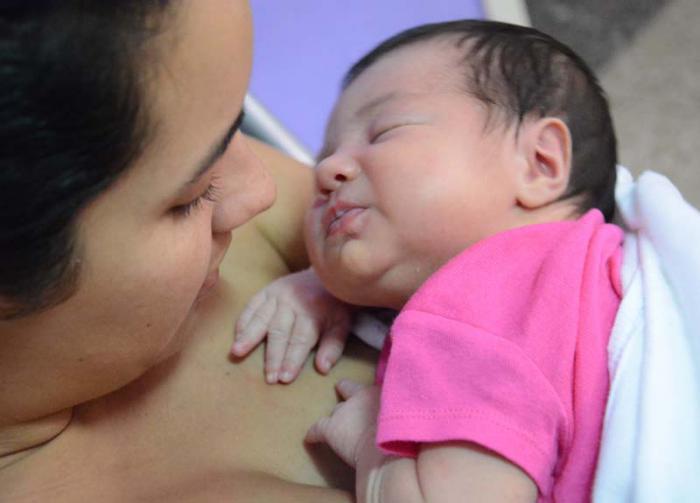New legislation was passed in Cuba to ensure greater maternity protection for working mothers, with the aim of encouraging a greater birth rate and addressing population aging

Marked by population aging and an increasingly low birth rate, the demographic outlook in Cuba continues to be complex.
To cite just a few figures, the overall fertility rate for more than three decades has not surpassed the 2.1 children per woman necessary to ensure adequate population replacement; in 2015 the figure in Cuba was just 1.72. Meanwhile, 19.3% of the population is over 60 years of age and life expectancy at birth is now 78.45 years.
Among steps taken by the Cuban government to address these issues, on February 9, the Extraordinary Official Gazette No. 7 announced two decree-laws and four resolutions aimed at extending maternity protection and benefits, in order to encourage a greater birth rate, women’s incorporation and reincorporation into the workplace, as well as the participation of other relatives in the care of minors.
From now on, in accordance with Decree-Law No. 339 on “Female Workers’ Maternity,” of December 8, 2016, if a mother returns to work – once she has completed her pre and postnatal maternity leave, and before the child is a year old – she can simultaneously receive the maternity benefit to which she is entitled and her normal salary.
It will also be possible for working maternal or paternal grandparents to take charge of the care of the child until the age of one and receive the corresponding social security benefit of 60% of their average monthly salary over the past 12 months – a benefit previously only extended to fathers.
Likewise, the Decree-Law specifies that the amounts of these monthly benefit payments can not be lower than the country’s established minimum wage.
In addition, if “the working mother receives two salaries for having more than one job, either in the same or a different workplace, she is entitled to receive the economic and social benefit provided in each of the employment contracts, in proportion to the real time worked.”
OTHER BENEFITS
A further resolution provides for a new payment system for services in children’s daycare centers and half-board schools for mothers with two or more children.
For mothers with two children, the rate for both will be reduced by 50%, and in the case of more than two infants, the third and any further children will not be subject to payment for these services. Mothers who give birth to twins or more infants will be completely exempt from payment.
Working mothers in the non-state sector will have additional benefits. Taking into account powers granted to the Minister of Finance and Prices through Law No. 113 “On the Taxation System,” of July 23, 2012, a discount was approved – according to the established procedures – of 50% in the payment of monthly Personal Income Tax quotas for self-employed women who have two or more children under 17 years of age.
Meanwhile, the regulations specify that a discount will be granted in the payment of taxes by self-employed persons who carry out the activities of “Child care assistant” and “Caregiver for the sick, disabled and elderly,” included in the Simplified Taxation Regime. This consists of a reduction of 50% in their monthly minimum payments, in accordance with the guidelines established in the corresponding resolution.
The new measures published in the Official Gazette are part of the study and systematic improvements regarding these issues undertaken by the Cuban state, with the purpose of addressing the country’s high level of population aging and encouraging a greater birth rate in the immediate term, which remains a pressing challenge.
 Escambray ENGLISH EDITION
Escambray ENGLISH EDITION





Escambray reserves the right to publish comments.